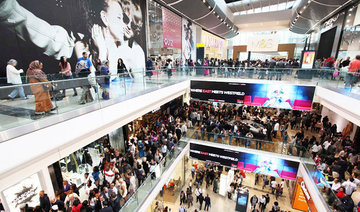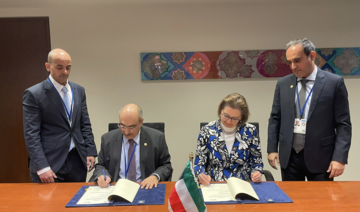LONDON: Mayfair luxury apartments were priced on average at £2,378 per square foot last year, six percent higher than those in Knightsbridge, according to a report commissioned by London-based estate agency Wetherell.
It is the first time in a decade Mayfair property has been significantly more expensive than Knightsbridge, the report said.
Sales volumes in Mayfair increased by 18 percent in 2017 on the previous year, bringing an end to a 52 percent decline in sales between 2013 and 2016, the research said.
Ultra-prime apartments in Mayfair can be valued in excess of £7,000 per square foot.
Rents also soared last year, with the highest luxury apartment rent now averaging £2,026 per week, which is 17 percent higher than Knightsbridge.
“Mayfair’s back,” Peter Wetherell, founder and chief executive at Wetherell, told Arab News, saying that investors from the Middle East as well as from the Far East and the UK itself are looking at investment opportunities in the increasingly desirable prime London location.
There are 15 new residential projects in Mayfair, which are expected to deliver 501 super-luxury residences over the next five years. Approximately 15 percent of these developments have been completed.
One such project is the ‘20 Grosvenor Square’ development where Abu Dhabi Investment Authority and the UK luxury design company Fichatton are converting the former US Naval HQ into 37 luxury homes.
For the past decade, Knightsbridge dominated the prime central London market, thanks in part to the opening of One Hyde Park in 2007. The residential and retail development is next to the London park and has the luxury department store Harrods on its doorstep.
The area’s appeal started to diminish, due in part to the lack of new luxury mega-developments in the last 10 years, the research suggested.
“The right developments are being built in Mayfair. All hotels have been revived in the last 10 years, the offices are some of the most expensive in the world. Within a few streets you can walk to some of the world’s leading retail brands,” said Wetherell.
“It is not that Knightsbridge has a problem — it is that Mayfair has a very exciting future,” he said.
Mayfair was a historically residential neighborhood until the second half of the 20th century when many homes were turned into offices and planning priority was given to commercial buildings.
This is now changing, said Wetherell. “People looked at these buildings and a lot of them 1940’s/50’s buildings — which are commercial, and thought actually these are worth more as residential,” he said. Currently Mayfair has more than 4,360 residential addresses, while Knightsbridge has just 2,500 addresses.
There have been doubts among the strength of Arab investment in prime London real estate following the decline of oil prices in recent years and the credit crunch in the Gulf.
A lack of international appetite has been seen as partly responsible for damping overall average apartment prices in prime central London. Average values fell to £1,655 per square foot in 2017 from £1,704 per square foot recorded in 2016.
Wetherell said the capital’s luxury market will continue to appeal to Middle East investors. “We’ve always been a magnet,” he said.
“There is money going into prime central London ... it is still an exciting story. When you travel around prime central London at the moment, there are cranes everywhere and there is great residential stock being built. A lot of the money is Middle Eastern and Far Eastern,” said Wetherell.
Research from Knight Frank points to strong Middle East appetite for high-end property investments and the UK.
The Middle East tops the rankings in terms of the proportion of ultra-high-net-worth individuals who are planning on buying a new home in 2018, according to the research published by the property consultancy on Tuesday.
Ultra-wealthy people from the region own an average of four homes, compared to Russians’ 3.5 homes, and Europe where the super rich own 2.7 homes on average.
The UK is also still the preferred destination for Middle East property investors, the research said, ahead of the UAE, the US, France and Turkey.
Gulf helps Mayfair regain London property top spot
Gulf helps Mayfair regain London property top spot

- It is the first time in a decade Mayfair property has been significantly more expensive than Knightsbridge.
- Sales volumes in Mayfair increased by 18 percent in 2017 on the previous year.
Saudi bank loans increase by 11% in March to hit $712bn, fueled by real estate activities
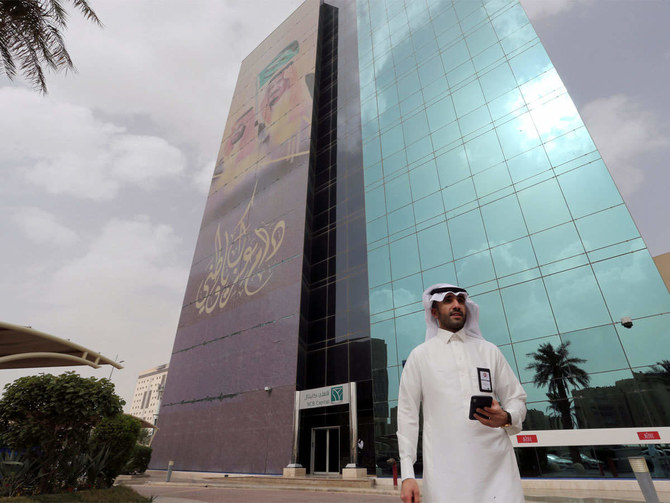
RIYADH: Saudi banks extended loans worth SR2.67 trillion ($711.5 billion) in March, marking an 11 percent increase as compared to the same month in 2023, according to the latest official data.
Figures released by the Saudi Central Bank, also known as SAMA, showed personal borrowings accounted for 35 percent of this growth, while the remaining 65 percent went to the corporate sector, particularly for real estate activities, as well as electricity, gas, and water supplies.
Real estate financing for corporate dealings specifically surged by 27 percent in the third month of the 2024, marking the highest annual growth rate in 10 months, reaching SR275.2 billion.
A study by Mortor Intelligence, which used 2023 as a base year, estimated the Kingdom’s real estate market at $69.51 billion in 2024, and expects it to reach $101.62 billion by 2029, growing at a compounded annual growth rate of 8 percent between 2024 and 2029.
The surge in real estate and construction endeavors may have heightened the need for debt-based financing primarily sourced from the local banking sector. Saudi banks play a central role in the provision of loans for real estate projects.
According to SAMA data, new retail residential mortgage loans experienced a notable increase, reaching a 14-month high at SR7.63 billion in March. This marked a 5 percent rise compared to the amount granted in the same month last year and a 10 percent increase from the previous month.
In March, lending for home purchases accounted for the largest portion, comprising 64 percent of new mortgages to individuals, totaling SR4.91 billion. The most notable growth, however, was observed in apartment loans, surging by 28 percent to reach SR2.24 billion. Meanwhile, land loans experienced a more modest growth of 4 percent, reaching SR474 million in new mortgages.
One factor contributing to this growth could be the need for residential properties from expatriates arriving in the Kingdom, along with government initiatives aimed at modernizing the financial system.
In a March study by Knight Frank, a notable trend emerged among expatriates, with 68 percent expressing a strong preference for owning an apartment rather than a villa. This inclination was especially prominent among individuals aged 35-45 and 45-55.
Growth in lending for electricity, gas and water supplies came as the second contributor in corporate loans after real estate, registering an annual rise of 27 percent to reach SR147.42 billion in March.
According to an April report by Global Data, the key sectors in the Saudi Arabia power market are the residential sector, commercial sector, industrial sector, and others. In 2023, the residential sector had the dominant share in the power consumption market.
The American International Trade Administration also stated in a January report that Saudi Arabia has experienced rapid economic and population growth since the discovery of oil. The population is projected to increase to 40.1 million by 2030.
Due to limited water resources, the country continues to invest in desalination facilities to meet rising water demands, aiming to deliver 2.18 billion cubic meters per year of desalinated water.
The Ministry of Environment, Water, and Agriculture has allocated $80 billion for water projects, with the wastewater treatment services market also expanding steadily according to the report. In 2021, Saudi Arabia built 133 wastewater treatment facilities, marking a 14.66 percent increase from the previous year.
SAMA data also revealed that financing for professional, scientific, and technical activities soared by 54 percent, hitting SR6.4 billion, marking the highest annual growth rate among sectors.
Education loans also showed robust growth, with an annual increase of 28 percent to reach SR6.27 billion. Additionally, financing for administrative and support service activities rose by 20 percent, totaling around SR34.22 billion.
While the proportion of lending allocated to the scientific and education sectors may currently be modest, the Saudi government acknowledges their pivotal significance in driving the Kingdom’s comprehensive transformation agenda.
Recognizing the paramount importance of innovation and fostering a culture of scientific inquiry, the government has implemented diverse initiatives aimed at nurturing these sectors.
These efforts are believed to have played a part in the gradual increase in lending support extended to these sectors by financial institutions. As the Kingdom continues to prioritize knowledge-based industries and endeavors, further advancements and investments in these areas are anticipated to amplify, propelling the nation towards its ambitious developmental goals.
Saudi Arabia’s car imports surge to 160k over last 2 years: official figures

RIYADH: Saudi Arabia’s car imports in 2023 hit 93,199, utilizing all modes of transportation — land, sea, and air — reflecting nearly a 40 percent growth from the previous year.
In the last two years, the Kingdom has imported a total of over 160,000 cars, with 66,870 imports recorded in 2022 alone, according to Hamoud Al-Harbi, the spokesperson for the Zakat, Tax, and Customs Authority, reported Saudi Press Agency.
This positions Saudi Arabia as one of the largest markets globally for automobiles, accounting for more than half of the car sales in the Gulf Cooperation Council countries, and ranking among the top 20 markets worldwide.
According to the authority’s spokesperson, cars were primarily imported from Japan, India, South Korea, the US, and Thailand to the Kingdom during the past two years.
Wael Al-Dhayyab, the official spokesperson for the Saudi Standards, Metrology, and Quality Organization, underscored the rigorous efforts undertaken by the Vehicle Inspection Unit in 2023. They inspected 60,473 vehicles to uphold the highest technical and safety standards.
Concurrently, 18,150 energy efficiency certificates were issued for tire products, highlighting SASO’s commitment to ensuring tire quality and safety in the Saudi market.
Al-Dhayyab emphasized that these endeavors demonstrate the organization’s dedication to enforcing stringent standards, fostering tire quality, and safety.
Moreover, he stressed the body’s pivotal role in advancing energy efficiency and endorsing initiatives aimed at enhancing product safety and economic growth.
Additionally, Al-Dhayyab noted a significant milestone in 2023, with SASO awarding 172 conformity certificates for electric vehicles, witnessing a 465 percent surge from the previous year.
This emphasizes the organization’s crucial role in facilitating the shift toward sustainable energy adoption.
Furthermore, he pointed out that the body issued 1,505 fuel efficiency cards for new light vehicles, indicating its commitment to promoting eco-friendly transportation solutions.
The surge in the import of motor vehicles led to Saudi banks witnessing a 7.67 percent increase in letters of credit to the private sector in the first 11 months of 2023, compared to the same period the previous year.
The data, released by the Saudi Central Bank, revealed that settled LCs and received bills to this sector hit SR155.19 billion ($41.38 billion).
LCs, a financial document issued by a bank, guarantee payment to the seller upon fulfilling specified conditions in a trade transaction.
The growth is primarily attributed to an upsurge in the import of motor vehicles, accounting for around 75 percent of the overall increase.
The import value in this category reached SR39.7 billion, marking a 26.29 percent increase, the data showed.
UAE’s Mubadala Capital plans $13.5bn investment in Brazil’s biofuel sector
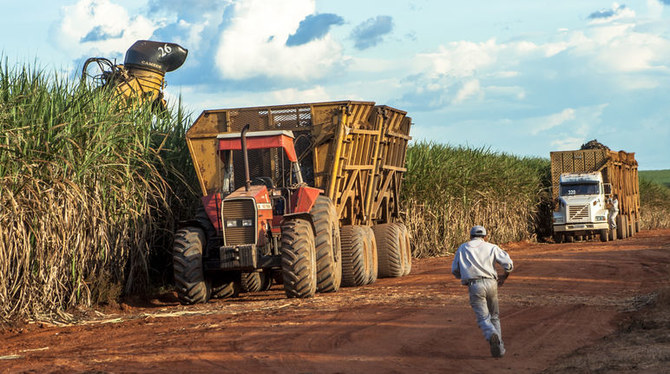
RIYADH: Brazil’s biofuel market is set for substantial growth as UAE’s Mubadala Capital has committed to invest $13.5 billion over the next decade.
Oscar Fahlgren, head of Brazil strategy at the sovereign wealth fund, disclosed the budget for the initiative during an interview with the Financial Times. He divulged the details of the fund’s plans to produce renewable diesel and sustainable aviation kerosene primarily utilizing non-food plant matter.
In his interview with the newspaper, Fahlgren said Mubadala’s Brazilian subsidiary, Acelen, will initiate the development of a large-scale biofuel project by 2026.
The fund’s executive stated that the funds will be sourced through a blend of equity and debt over a span of five to 10 years.
The endeavor will encompass five modules, each valued at $2.7 billion, housing a new biorefinery capable of processing 20,000 barrels of fuel per day. Additionally, it will include the necessary infrastructure and cultivated acreage to sustain the input crop.
“It’s all about feedstock (which) in reality is agriculture. And Brazil is probably the best-placed country on the planet when it comes to agricultural proficiency because of the climate and the fertile soil,” said Fahlgren, adding, “Brazil is to agriculture what Abu Dhabi is to oil.”
The project will also include the conversion of an existing oil refinery in the northeastern Brazilian state of Bahia acquired from government-owned Petrobras in 2021.
“It’s a very important capital project,” Fahlgren said. “I see tremendous opportunity to invest in the green energy transition space in Brazil,” he added.
Mubadala’s venture into bioenergy will leverage its existing $6 billion investments in the country, constituting approximately a quarter of the group’s global portfolio.
“We’ve been very active investing in Brazil, for the past 10-plus years, in an environment where most foreign investors have been shying away,” Fahlgren said.
Mubadala also plans to open a stock exchange in Brazil next year through its Americas Trading Group.
“Brazil is a very large country. It has only one stock exchange. And I think that’s suboptimal infrastructure for the players that operate in this segment,” said Fahlgren.
“It will probably be a staged launch — perhaps start with equities, then expand. No asset classes are off the table.”
The asset management arm of the Emirati sovereign wealth fund is increasing its bets on Latin America’s largest economy, where its holdings span metro lines and medical universities to a majority stake in the local owner of the Burger King brand.
“We’re very bullish on the investment climate in Brazil right now and the opportunities we see,” said Fahlgren. “We do have a number of assets that are relatively mature today, and could be potential exit candidates in the not-too-distant future,” he added.
Eastern Province showcases environmental opportunities during investment forum
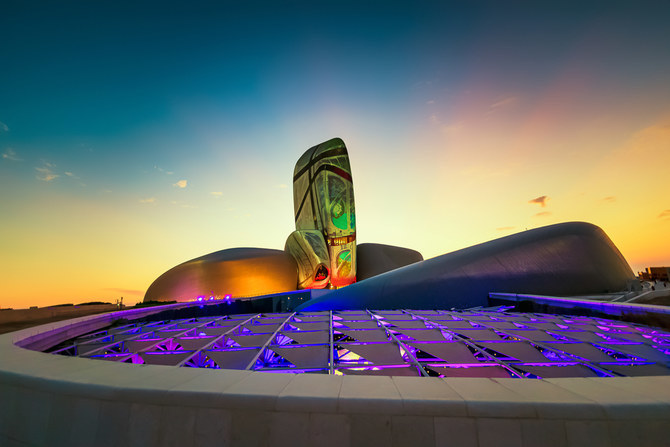
RIYADH: Investors eyeing environmental opportunities in Saudi Arabia’s Eastern Province stand to benefit from a forum held on May 5, amidst efforts to preserve natural resources.
Organized by the Eastern Chamber under the theme “Restoration and Sustainability,” the Environmental Investment Forum 2024 aims to underscore the importance of ecological preservation.
The event, patronized by Prince Saud bin Naif, Gov. of the region, also delves into the effects of environmental regulations and legislation on the business sector, the Saudi Press Agency reported.
Badr bin Suleiman Al-Ruzaiza, chairman of the regional chamber, emphasized the importance of environmental protection within the framework of the Kingdom’s Vision 2030.
He stressed that the country’s ambitious plan views environmental stewardship not only as a religious and ethical imperative but also as a humanitarian duty.
Al-Ruzaiza elaborated that Vision 2030 aims to reduce pollution by improving waste management efficiency across diverse sectors. He underscored the Kingdom’s proactive approach in addressing environmental issues domestically and globally.
The chairman emphasized the paramount significance of the environmental sector in conserving renewable natural resources.
He stressed its pivotal role in laying the essential groundwork for achieving holistic and sustainable growth, ensuring food security, and improving overall quality of life.
He stated that the forum seeks to shed light on the importance of the environment and ways to preserve it, addressing the impact of environmental regulations and legislation on business sectors.
Additionally, it aims to review investment opportunities for businesses in the environmental sector, as well as available financing channels for projects in this vital sector. This represents environmental investment as a key driver and effective element in achieving sustainable development.
Al-Ruzaiza clarified that the forum supports environmental protection practices, presents experiences and solutions, and aims to expand knowledge about investment opportunities related to sustainability. It also focuses on methods for addressing them and implementing associated mechanisms.
He also highlighted the array of sustainability initiatives and programs initiated by the Kingdom to foster green investments across various sectors. Furthermore, he emphasized the nation’s objective of increasing its reliance on clean energy sources, aiming to achieve 50 percent of total energy consumption by 2030.
He also noted the country’s determination to double its spending on investment and financing projects that operate in areas supporting sustainability.
The forum comes against the backdrop of the Eastern Province’s municipality recently unveiling a range of diverse investment opportunities, both permanent and temporary, across cities and governorates in the region.
The municipality had cataloged over 20,000 investment assets covering an area exceeding 116 million sq. m., serving as a database for significant growth in the region, as reported by SPA in March.
These encompass the development of waterfronts, plots, and infrastructure, as well as transportation, markets, and advertising billboards.
Additionally, opportunities for recreational and tourist centers are available. These also cover sports activities, factories, and exhibitions, along with warehouses, workers’ housing, and various tourist and commercial investment sites.
Kuwait’s non-oil sector steadies in April, UAE maintains growth

RIYADH: Non-oil activities in Kuwait demonstrated steady growth in April, buoyed by effective advertising and competitive pricing, supporting the expansion in new orders, an economy tracker revealed.
According to the latest Kuwait Purchasing Managers’ Index by S&P Global, the country’s PMI dipped to 51.5 in April from 53.2 in March.
A PMI reading above 50 indicates growth in the non-oil private sector, while readings below 50 signal contraction.
The report noted that job creation scaled back for the first time in eight months as companies aimed to minimize costs, while the rate of purchase price inflation was one of the sharpest on record in April.
According to the survey, this reduction in workforce numbers, coupled with a shortage of available raw materials, led to a buildup of backlogs of work in April.
“The slowdown in growth seen in April is not cause for immediate alarm as Kuwaiti firms were still able to generate solid expansions in new business and output at the start of the second quarter,” said Andrew Harker, economics director at S&P Global Market Intelligence.
The report mentioned that output prices increased only modestly in April, as companies endeavored to limit price hikes to customers by offering discounts.
Furthermore, input costs also surged sharply in April, driven by a marked rise in purchase prices.
“Growth continued to be predicated, at least in part, on competitive pricing. This put pressure on margins given rapidly increasing input costs, however. In a bid to limit expenses, firms cut back on employment numbers, thereby restricting the extent to which they were able to fulfill orders,” said Harker.
He added: “There are clearly risks that this will prove unsustainable and so companies will be hoping that either cost inflation moderates or that demand strengthens sufficiently to reduce the need for discounting in the months ahead.”
UAE maintains strong growth
Meanwhile, in another report released last week, S&P Global revealed that the UAE’s non-oil private sector maintained robust output growth in April. The Emirates’ PMI reached 55.3, down from 56.9 in March but remained firmly above the 50 mark, indicating expansion.
According to the survey, this slowdown was attributed to floods and rains that hit the country in April.
“April data highlighted strong overall growth across the UAE non-oil private sector as buoyant domestic economic conditions helped to support long-term business expansion plans. However, the latest survey signaled a sharp slowdown in new business gains in the wake of heavy rainfall and flooding,” said Tim Moore, economics director at S&P Global Market Intelligence.
He added: “Companies operating in Dubai recorded a particularly acute loss of sales momentum as adverse weather disruptions hit business and consumer spending.”
S&P Global revealed that backlogs of work increased considerably in April, attributed to temporary business disruptions and heightened pressure on operating capacity.
The report added that non-oil businesses in the UAE remained optimistic about future output over the next year, although the level of optimism eased, dropping to its lowest reading since January.
“Non-energy businesses are nonetheless still highly upbeat about their year ahead growth prospects. Many commented on strong sales pipelines and swift recovery from the impact of heavy rainfall,” noted Moore.
According to the survey, higher levels of employment were recorded in April, driven by new project starts and resilient demand conditions.


